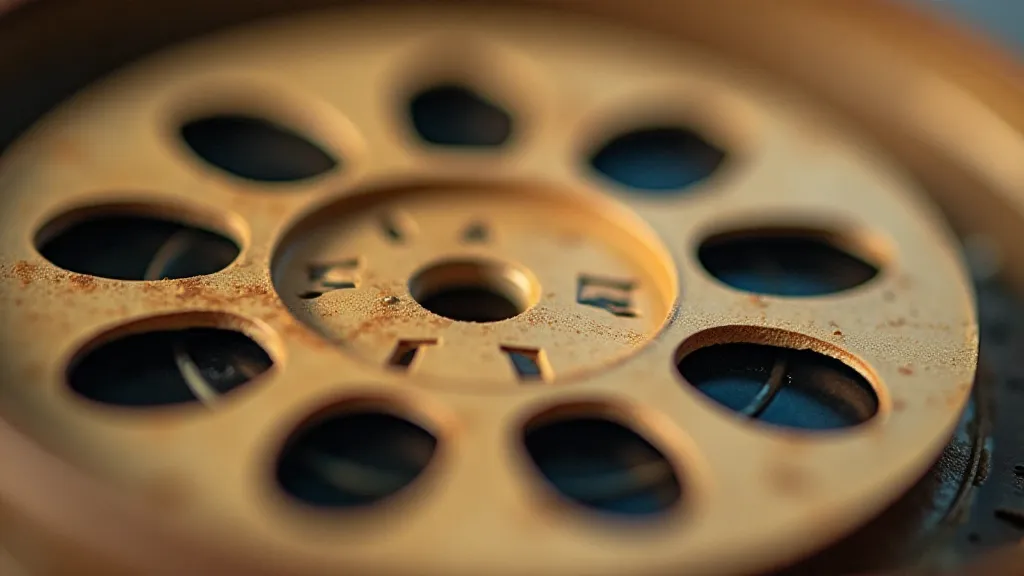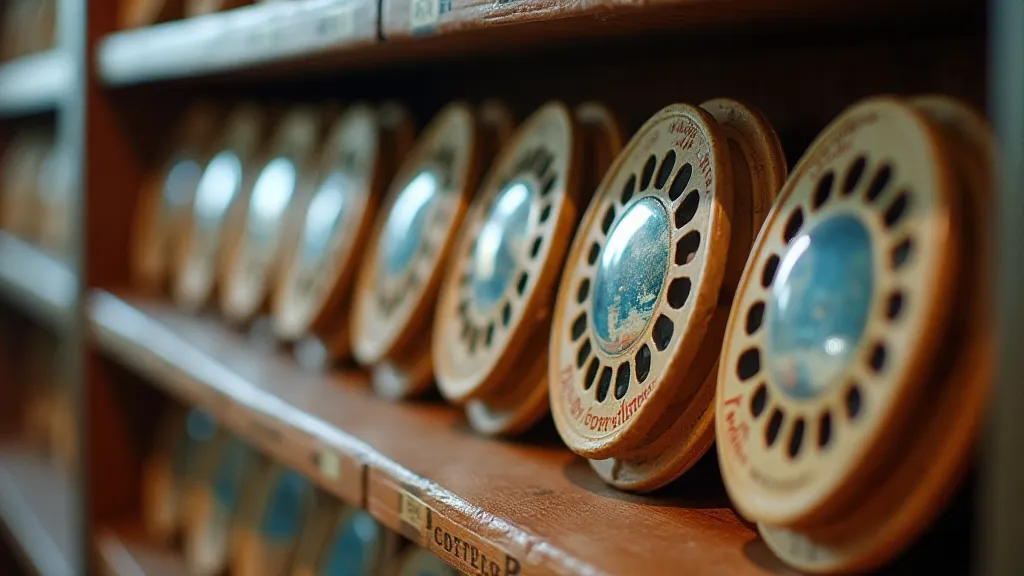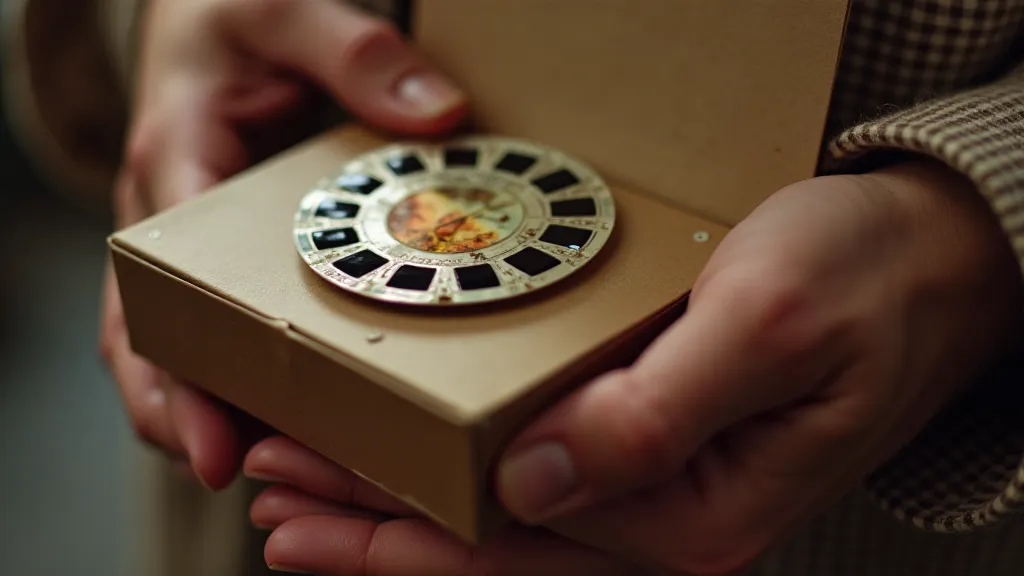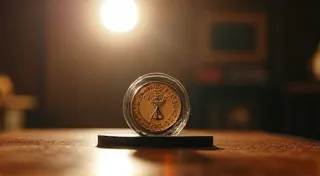The Tapestry of Time: Connecting View-Master Reels to Broader Historical Narratives
There’s a particular scent that clings to vintage View-Master reels – a faint aroma of aged cardboard and perhaps a whisper of the places they’ve been. It’s a scent that instantly transports me back to my grandfather’s den, a room filled with the comforting weight of well-loved objects and the quiet hum of a projector illuminating miniature worlds. For many of us, these little cardboard discs represent more than just nostalgic entertainment; they are tangible fragments of the past, offering surprisingly rich insights into the historical narratives that shaped them. Collecting them isn't simply about acquiring objects; it's about holding a window into bygone eras, witnessing the world through the eyes of those who came before us.

A Portal to Popular Culture
The View-Master, introduced by Sawyer’s View-Master Company in 1939, wasn't just a technological marvel for its time, but a carefully orchestrated cultural phenomenon. Its initial focus on stereoscopic views of art and natural wonders positioned it as an educational tool. But the company quickly recognized the potent combination of technology and entertainment, and the reel format allowed for unprecedented flexibility in content. Consider the early years of the Cold War. View-Master reels offered sanitized, accessible glimpses of countries and cultures often shrouded in mystery and geopolitical tension. They presented a carefully curated narrative, of course – a glossy postcard view of a world that was often far more complex. Analyzing these reels reveals not only what was shown, but, crucially, what was omitted.
The post-war boom saw a dramatic expansion of reel subjects. Hollywood studios recognized the potential for promotion, and suddenly, we had reels dedicated to movie premiers, showcasing the glamour and spectacle of the silver screen. Television shows, theme parks like Disneyland, even specific brands – all clamored for the opportunity to have their images immortalized in these miniature packages. This influx of commercial content transformed the View-Master from an educational device into a powerful marketing tool, reflecting the burgeoning consumer culture of the 1950s and 60s. The rise of the View-Master intertwined with the larger narrative of how a generation experienced wonder; it truly became a keystone of childhood, shaping imaginations and solidifying memories.
Reflecting Societal Shifts
The content of View-Master reels isn’t immune to reflecting broader societal shifts. Early reels often depicted landscapes and cultural landmarks. But as the Civil Rights movement gained momentum in the 1960s, we see a gradual, albeit cautious, inclusion of images depicting African American communities and cultural expressions. While these representations were often still filtered through a lens of the time, their presence signals a subtle acknowledgement of changing social dynamics. Examining the historical context behind these images highlights the deliberate choices made in crafting a specific vision of America; sometimes, those choices cast shadows in the diorama, revealing underlying biases and assumptions.
The Space Race provides another fascinating window. The excitement surrounding the Apollo missions was captured in a series of reels, showcasing the technological innovation and national pride that defined the era. These reels served as powerful propaganda, fostering a sense of collective achievement and bolstering public support for the space program. The very act of portraying these feats of engineering in such an accessible format demonstrates the desire to share the wonder of scientific advancement with the masses. It's remarkable how the tangible nature of the reels, the feel of the cardboard and the distinct clicks of the viewer, reinforced a sense of collective experience and shared memory.
The Craftsmanship and Care
Handling a vintage View-Master reel is an experience in itself. The quality of the cardboard, the precision of the image reproduction, the subtle wear and tear that speaks volumes about its history – these are all indicators of a time when products were built to last. The early reels were often printed on thicker cardboard stock with more vibrant colors. As production techniques evolved, quality varied. Recognizing these differences is a key element of collecting, and it allows us to appreciate the craftsmanship that went into each individual reel. Beyond the imagery itself, understanding the historical context informs our appreciation of the reels’ cultural and technological significance.
Restoration, of course, must be approached with a delicate hand. Cleaning a reel can be risky; harsh chemicals can damage the image. Gentle dusting with a soft cloth is usually the safest approach. Protecting reels from light and moisture is also crucial for preserving their condition. The value isn’t solely in the imagery; it’s in the integrity of the object itself – a testament to a time when durability and attention to detail were prioritized. The stories held within these reels are a reminder of the chromatic echoes of the past, whispers of a world captured in miniature.
The Global Village: Travel and Exploration
The “Travel Series” of View-Master reels is particularly captivating. They offer a glimpse into how different cultures were presented to an American audience during the mid-20th century. Consider the reels depicting exotic locales like the Swiss Alps or the bustling markets of Morocco. While beautiful, these images often sanitized and romanticized the realities of those places, projecting a specific, often idealized, vision of the world. The romanticized depiction of these places, while visually appealing, often masked complex social and political realities.

The very concept of “travel” as a leisure activity was being democratized during this period. The rise of affordable air travel and the burgeoning middle class made it possible for more people to experience different parts of the world. The View-Master, in a sense, offered a vicarious journey for those who couldn't physically travel, fueling the desire for exploration and broadening perspectives – albeit within carefully controlled narratives. The soundscapes associated with these images, though absent from the reels themselves, were integral to the overall experience, evoking a sense of place and adventure, a loss which is explored further in ephemeral echoes of aural companions.
Beyond the Image: The Human Connection
Collecting vintage View-Master reels isn’t just about acquiring tangible objects; it’s about connecting with the past on a profoundly human level. It’s about understanding the hopes, fears, and aspirations of those who came before us. It’s about appreciating the power of imagery to shape perceptions and influence opinions. It’s about recognizing that even seemingly innocuous pieces of cardboard can hold a wealth of historical information. The memories evoked by these reels, the scent of aged cardboard, the satisfying click of the viewer – all contribute to a powerful sensory experience, a tangible link to the past.
My grandfather’s den, with its comforting scent and its collection of View-Master reels, wasn’t just a room; it was a portal to another time, a place where stories came alive. And now, as I carefully examine each reel, I’m not just seeing images; I’m seeing fragments of history, echoes of voices long gone, and a powerful reminder of the enduring human desire to explore, to connect, and to share our experiences with the world. The very act of preservation, of carefully cleaning and storing these relics, feels like a continuation of that sharing, a way to pass on these miniature windows into the past to future generations.






